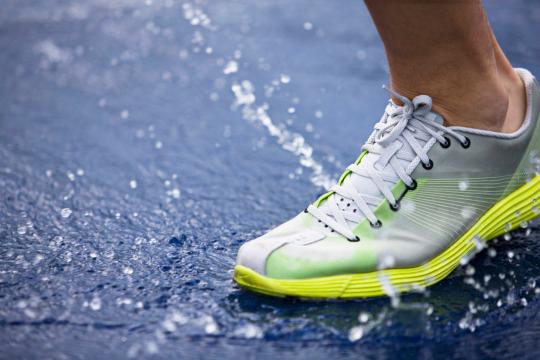With all the brands, styles and options out there, choosing the right running shoe for your foot feels like an oddly difficult task — and it’s one we’re definitely overcomplicating, according to a new paper published in the British Journal of Sports Medicine.
There’s been a whole bunch of research on selecting the best running shoe to help reduce injury. According to a New York Times report, there are a couple major factors that are continuously examined.
One issue is pronation, or just how much our foot rolls inward when it hits a surface; orthopedic experts believe that too much or too little pronation can lead to injury, but the proper shoe can help your foot rotate correctly.
The other major category of concern is impact force as foot hits surface. Over the last few years especially, there’s been a spotlight on how to reduce that force to lower the risk of injury. This has lead to a rise in proponents of barefoot running, or simply wearing new lightweight, thin-soled shoe designs.
In the new paper, Benno M. Nigg, PhD, and his fellow co-researchers in the Human Performance Lab at the University of Calgary wanted to put these two schools of thought to the test in particular, looking into years and years of research on running shoes and foot injuries. After a thorough review, they found that there was little evidence to show issues like pronation or impact force led to more injuries.
The researchers found there was just one criterion we need to consider when choosing running shoes, which will help reduce the risk of injury: comfort.
Pretty simple, right?
This finding was in line with something Nigg and his colleagues had previously discovered. “We did a study with the Canadian military and found that the injury frequency is reduced when soldiers wear insoles that are comfortable,” he tells Yahoo Health. “From there, comfort was the central point for many of our studies.”
As the team explains in their paper, there’s “a lack of conclusive evidence” to show pronation and impact force are to blame for injury. Instead, they introduce two paradigms for selecting shoes: “the comfort filter” and “the preferred movement path.”The basic idea is that bodies are smart. If a runner intuitively chooses the shoe that’s most comfortable, this allows the body to naturally follow its preferred movement path.
So, the next time you need a running shoe, try on several options at the store — but you don’t need to overthink it. “Never buy a shoe or orthotic that is not comfortable,” Nigg says. “Use your comfort as the main criterion for buying a shoe.”
Probably the best and easiest advice you’ll hear all day.
Fuente: www.yahoo.com
